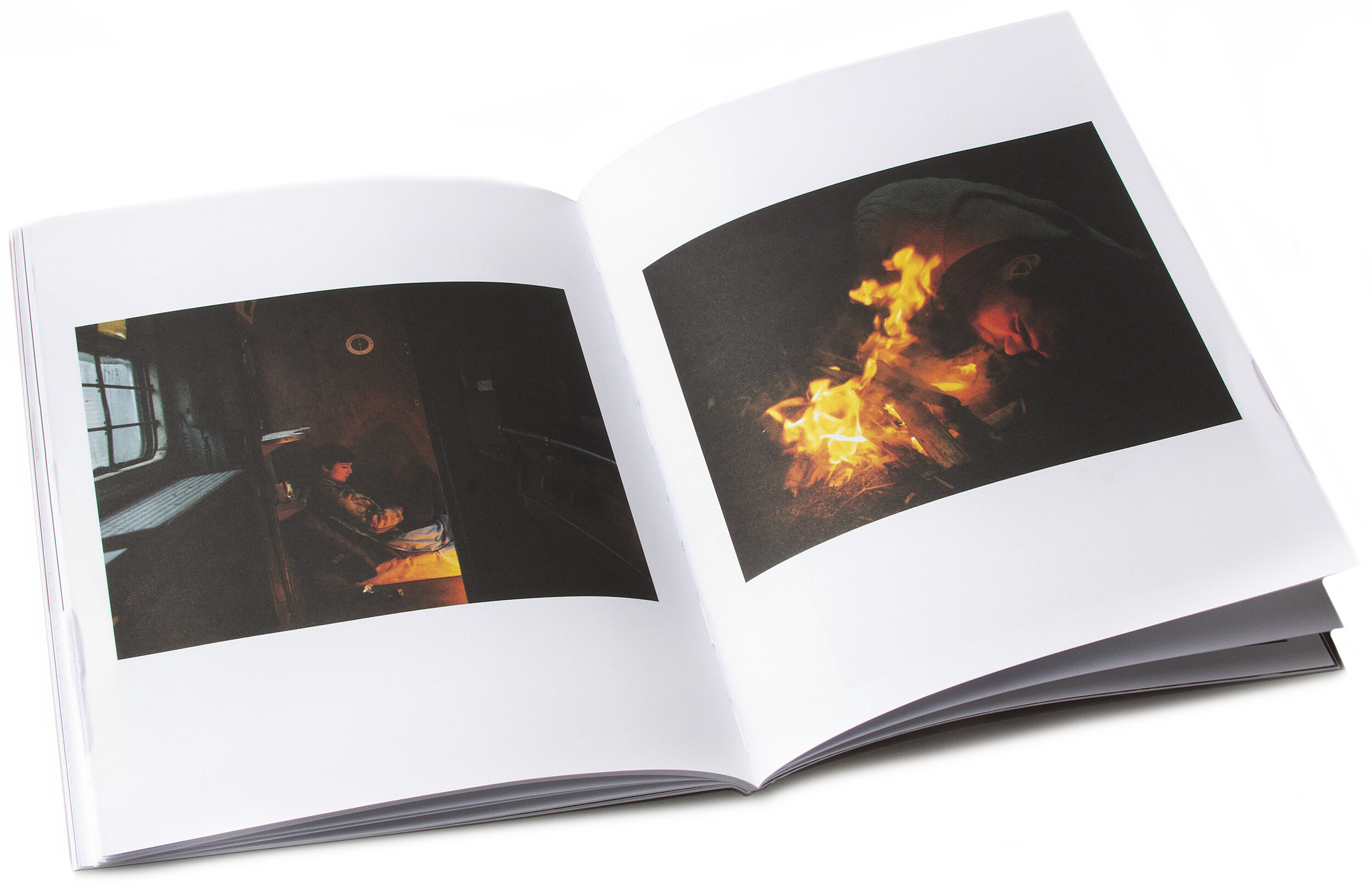Robert Darch
Robert Darch
The Moor
Softcover
9.25 “ x 7.4”
54 pages
Edition of 500
Another Place Press
2018
From the artist:
The Moor depicts a fictionalised dystopian future situated on the bleak moorland landscapes of Dartmoor. Drawing on childhood memories of Dartmoor alongside influences from contemporary culture, the narrative references local and universal mythology to give context but suggests something altogether more unknown.
The realisation of this dystopian future is specifically in response to a perceived uncertainty of life in the modern world and a growing disengagement with humanitarian ideals. The Moor portrays an eerie world that shifts between large open vistas, dark forests, makeshift dwellings, uncanny visions and isolated figures. The sense of an on-going narrative is reinforced by the reoccurrence of characters, often appearing on edge, in peril or distressed.
The inherent wildness of the landscape heightens this fragile sense of existence, with the suggestion of an unseen presence adding to the isolation and tension. The fiction is grounded within the landscapes of Dartmoor, using found locations instead of overt staging, artificial lights or constructed sets. Shifting between pseudo documentary and constructed photography the Moor blurs that liminal space between fiction and reality.
Book review by Tim Hodge |
The Moor is a dark dream, a portent of doom. A message in a bottle from the future cast back in time, full of warnings. Something between the construction and pacing of La Jetée and the aesthetics of Mad Max. Yet, this dream and vision have an inevitability to them. Even with this premonition, the cataclysm seems impossible to escape.
The psychological power of the color scheme of The Moor can not be understated. It begins on the cover, delicate white lines like a cool breeze across a cliff face under a stark sun. The shape of the book and color of the cover calls to mind government publications from my childhood. This quasi-authoritative structure references mass production but holds secrets within its pages. The combination of delicate imagery and almost brutalist physicality reminds me of the quiet moments in the original Mad Max, beautiful with palpable tension, a clash of disparate feelings.
From the start, The Moor immediately grips the viewer with a powerful image of isolation. A solitary person on the titular moor, awash in fog, winter (natural or manmade) has seemingly stripped this field of the life it guarded. Throughout the book there’s never more than a single person in an image. The rich tones drip with mood, hauntingly lonely yet so inviting.
I don’t want to give too much away but one of the most delightful things about his book is the moments of repetition, its cinematic pacing. The repeat of its start forms keeps drawing me in. The images are like the chorus in a song, each page a poem’s stanza. More than a collection of pictures it achieves the goal of every photo book, telling a story. There is no body text in the book itself, allowing the story to take on a more personal narration than if it had been guided by copy.
Every time I look through this book I experience an inescapable desire to know what’s on the outer bounds of the frame, to explore this world. I kept wondering how one writes about the inevitability of doom? From the visual statement I hold in my hands, I believe Robert Darch might say “don’t write, make images.”








